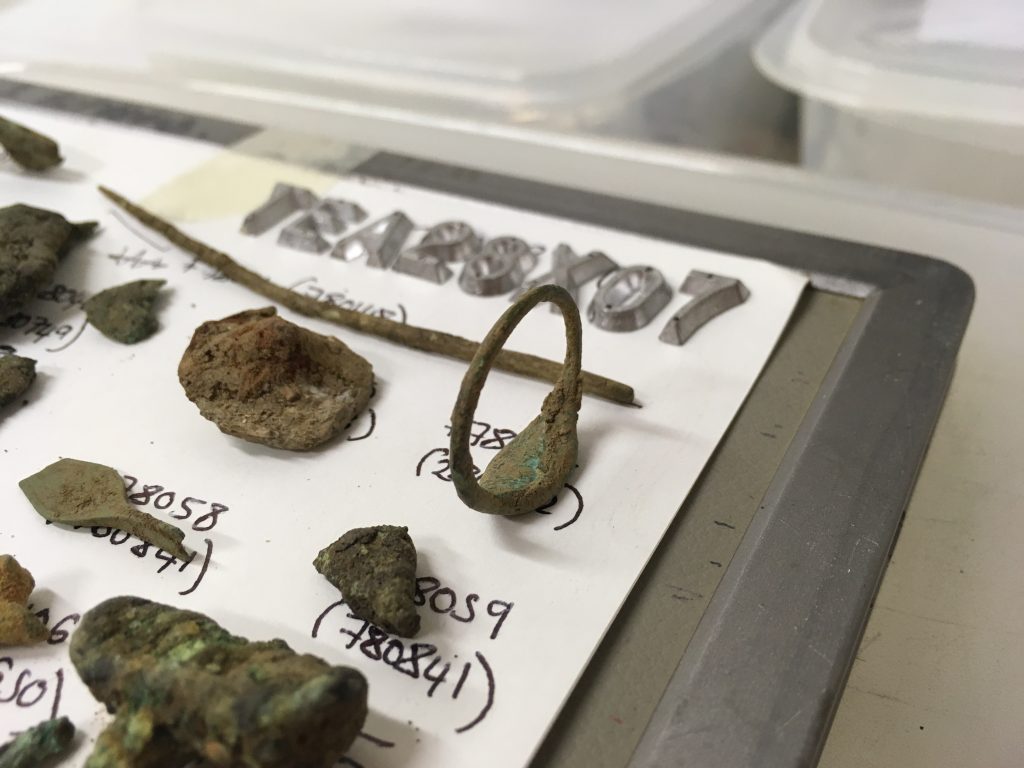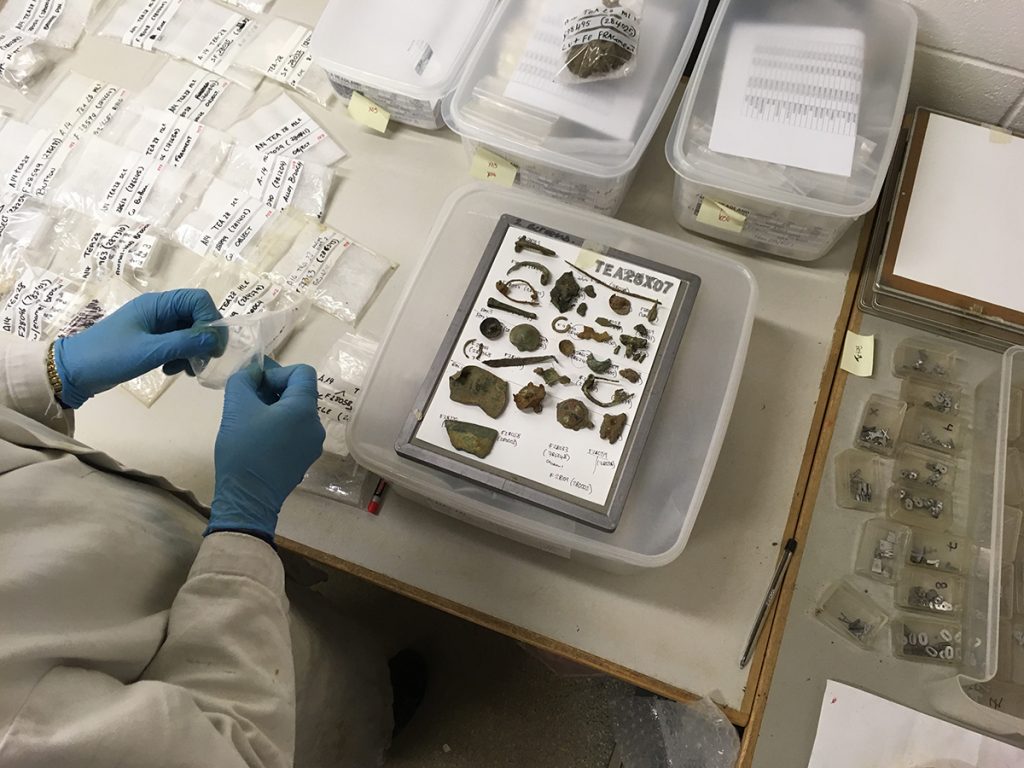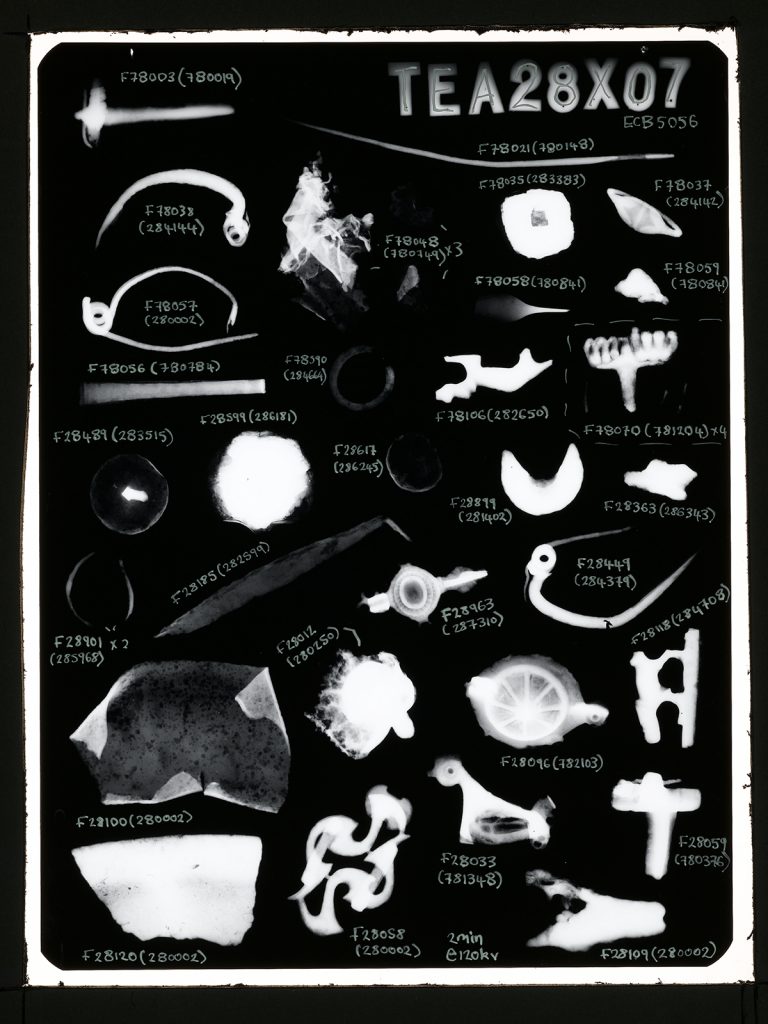X-rays are a non-destructive way of exploring metal archaeological finds in more detail. They allow our finds specialists to reveal the true form of heavily corroded items and get a glimpse of the very fabric of an object, meaning they can better understand how it was made, its condition and see features that aren’t necessarily visible to the naked eye.
This method forms a vital part of the conservation assessment that our team are conducting as part of the post-ex assessment for the A14 Cambridge to Huntingdon improvement scheme. Our archaeologists have excavated sites across Cambridgeshire, from the very wet to the very dry, meaning that the metal items discovered across the scheme vary in their condition – some are remarkably well preserved, and some are heavily corroded.
The first step in a conservation assessment is to x-ray all of the items, this is on a 1:1 scale so that the images of the finds come out life size. Finds are arranged on a sheet, carefully labelled and x-rayed.
- Metal finds x-ray showing more detail (c) Highways England courtesy of MOLA Headland Infrastructure
- Metal finds layed out for x-ray (c) Highways England courtesy of MOLA Headland Infrastructure
The detail
Some of these finds have been in the ground for thousands of years, and in that time their true identity and some of their detail has been lost to, or disguised by corrosion. However, there are things our team can do to retrace this detail without damaging the find. For example, to the top right of the plate pictured below, there’s a ring.

Close up of metal finds laid out for x-ray (c) Highways England courtesy of MOLA Headland Infrastructure
The ring is placed face-down on the x-ray plate so that any detail on the front that is not visible, will show up on the x-ray. It’s not unrecognisable as a ring but x-raying it in this way allows the team to see whether any small details, facets or decoration are hidden beneath the corrosion on the surface.
Conservation
Because we have so many different finds from different periods, ground conditions and parts of the county, it means that each find will inevitably have its own conservation needs.
After studying an x-ray, finds specialists might send certain items to the conservation team if they’ve been able to identify an interesting feature on it, for example an inlay, plating or something unusual about its shape, or, just to clarify detail which might help with dating. The x-ray itself can also help the conservator looking after an item to gain a better understanding of its condition.
Join us on our journey!
- Twitter: @A14C2H #A14Archaeology
- Facebook.com/A14C2H/ #A14Archaeology
- Find out more about the A14C2H improvement scheme here
The archaeological programme for the Cambridge to Huntingdon improvement scheme is being carried out by A14 Integrated Delivery Team on behalf of Highways England.



0 Comments
Leave A Comment